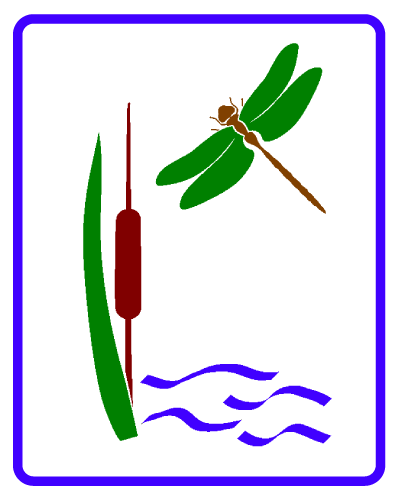

Churchville Nature Center
Bucks County Birders
Welcome to the Bucks County Birder's Page
Here you can learn about the group and read their latest birding blog post.
The Bucks County Birders are a group of people who share an interest in watching and learning about wild birds, whether in exotic locales or in their backyards.
Meetings are held on the 4th Tues of each month at 7:00 pm. Currently meetings are being done online through zoom. Each meeting involves a guest speaker and updates on what's happening in the community.
If you are interested in getting more involved in the growing local birding community, please send an email to bucksbirders@gmail.com or visit their Facebook page in the link HERE.
Download current and past blog:
Happy birding!
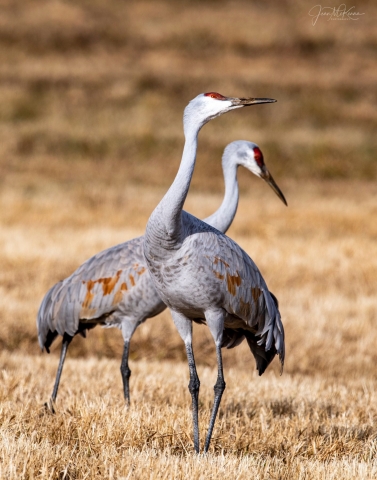
Photo by Jean McKenna.
Bucks Birding Blog - Volume 1, Issue 7
Kestrel Banding in Bucks County
By Jere Schade,
Master bird bander for Raptors
Master bird bander for Raptors
This summer in Bucks County, 314 newly hatched kestrels received a uniquely numbered federal bird band which they will wear the rest of their lives. Two Bucks County residents, Devich Farbotnik and Steve Benningfield have built, installed, and maintained kestrel boxes for many years before I showed up a decade ago to assist with banding the nestlings.
Devich is a subpermittee under my banding license but operates pretty much independently (and with lightning speed). He maintains over 90 boxes and had over 70 kestrel pairs lay eggs this year. Devich singlehandedly banded 256 nestlings in June and July. The majority of Devich's boxes are located north of route 202.
Steve and I operate together (at a much slower pace) and were very pleased that 14 of our 22 boxes had young and kept us busy banding 58 nestlings. Most of our boxes are south of route 202 and north of Newtown. I'm sure there are other volunteers throughout the county who have built nesting boxes and host kestrels on their property as well, so I'm hoping there are many more success stories out there.
Installing boxes is just one way to help the declining kestrel population, but it is certainly not a panacea. When those kestrels leave the box about four weeks after hatching, they face their most dangerous challenges. They're inexperienced flyers and hunters and the vast majority will not make it through their first year. We must take action to help preserve habitat and educate and advocate against the use of environmental toxins. Occasionally we will find adult kestrels dead in the box with eggs underneath them. When there is no sign of predation, poisoning or avian viruses are the prime suspects. While 317 new kestrels is great news, let us support actions and policies that improve their survival rates. It is so encouraging when we get reports that "our" nestlings were encountered as adult parents in boxes near their birthplaces in Bucks County or across the river in central New Jersey.
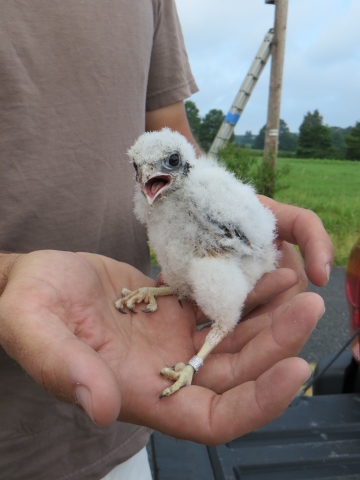
Chicks are usually banded when they are between one to three weeks old.
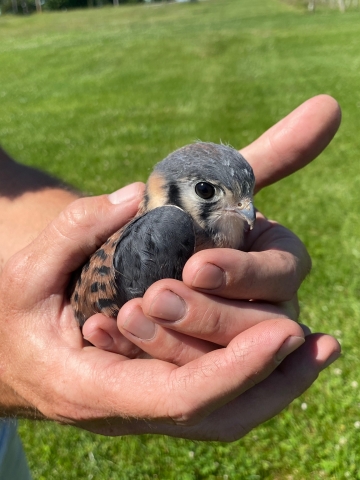
Near the fourth week they start to look like adults and are about to fledge.
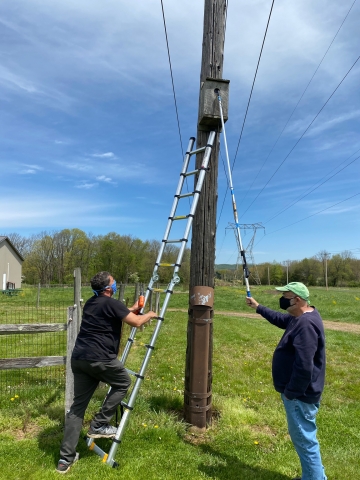
Steve and Jere about to open a box to band the nestlings.
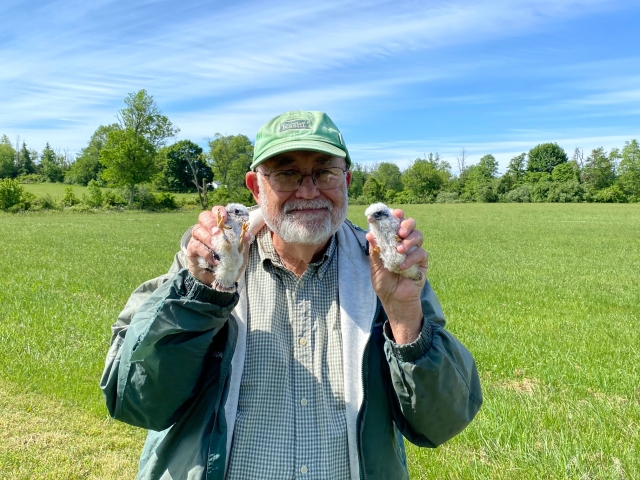
Steve Benningfield holds 2 nestlings from one of his boxes.
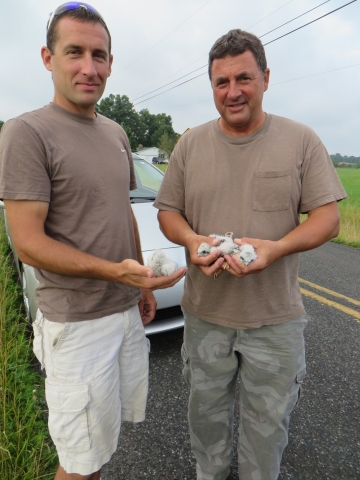
Devich and Jere with a handful of nestlings.